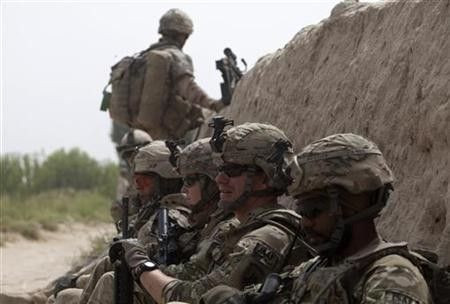Army Says Improperly Tested $2.5 Billion Body Armor Is Safe

Body armor worth $2.5 billion that the Department of Defense's Inspector General found had been improperly tested poses no hazard to troops, according to the Army.
The Army cut corners and skipped tests altogether on seven body armor contracts, a DoD IG report released August 1 said.
Army spokesman Matthew Hickman said on Wednesday that the report never concluded that safety of soldiers wearing the body armor was at issue.
I think when you first hear about it you think, holy moley, the Army's providing body armor to soldiers that can't even stop a bullet. And that's just not the case, Hickman said.
If you read it it says this isn't an issue of safety it's more of an issue of testing procedures -- the report never actually questions the safety of the body armor, he said.
Congress requested the DoD IG's investigation of seven Army contracts worth a total of $2.5 billion dollars and awarded between 2004 and 2006.
The Army cannot be sure that the appropriate level of protection has been achieved, Deputy Assistant Inspector General Bruce Burton stated.
The results showed that ballistic testing and quality assurance for some 5 million body armor inserts did not have proper controls to ensure the inserts met the contract requirements.
The inserts are part of Interceptor Body Armor (IBA), a system of body armor that consists of an outer vest, ballistic inserts, and other parts that increase area of coverage, according to the DoD IG.
IBA increases survivability by stopping or slowing bullets and fragments and reducing the number and severity of wounds, the report states.
Problems such as accepting invalid test results or failing to enforce humidity and temperature requirements, critical to troops using body armor in the deserts of Afghanistan and Iraq, were found with testing on all seven contracts.
But the DoD IG also noted that it could not conclude that the body armor's performance had been negatively impacted.
Because we did not conduct any additional testing, we could not conclude that ballistic performance was adversely affected by inadequate testing and quality assurance, the report said.
The Army had already implemented recommended testing changes by the time the report was published, according to Hickman.
The testing procedures are an ever-growing process, when the army identifies better ways to test body armor, changes are made, he said.
The report is the fourth in a series issued after Democratic Congressman Louise Slaughter of New York directly requested investigation into the Army's policy on body armor.
In 2008 the DoD IG concluded 13 body armor contracts did not have proper documentation. In response, the Army recalled 100 percent of the body armor identified by the DoD IG to put it through more rigorous testing, said Hickman.
Of the recalled equipment, 100 percent has passed with maximum protection rates, he said.
The Army has spent roughly $10 million in recent years to upgrade existing facilities for research, development and testing for body armor, according to the DoD IG.
Six of the 13 body armor contracts were addressed in a DoD IG report in January, and the August report addresses the remaining seven.
© Copyright Thomson Reuters {{Year}}. All rights reserved.





















